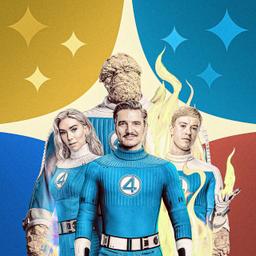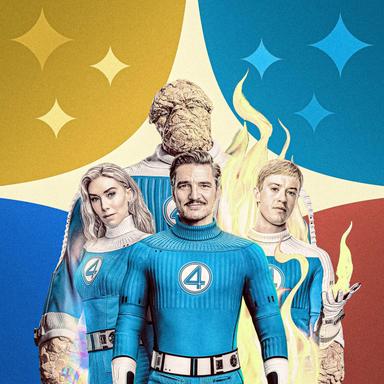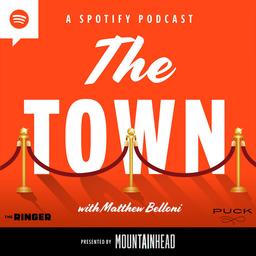In the introduction to Stan Lee’s Origins of Marvel Comics, the iconic Marvel writer and editor invokes the Book of Genesis to describe the creation of the Marvel universe:
In the beginning Marvel created the Bullpen and the Style.
And the Bullpen was without form, and was void; and darkness was upon the face of the Artists. And the Spirit of Marvel moved upon the face of the Writers.
And Marvel said, Let there be The Fantastic Four. And there was The Fantastic Four.
And Marvel saw The Fantastic Four. And it was good.
While the biblical allusion might say more about Lee’s characteristic mythmaking than it does about the true origins of the publishing company, it does illustrate the foundational position that the Fantastic Four occupy in Marvel’s illustrious history.
Created by Lee and legendary artist Jack Kirby, the Fantastic Four made their debut in 1961, the same year that Atlas Comics ushered in a new era under its rebranded moniker, Marvel Comics. The superhero group arrived at a time when the popularity of superteams was on the rise in the comic book industry following DC’s introduction of the Justice League the previous year.
To assemble their own group to lead Marvel into a new age of comics, Lee and Kirby repurposed one of the founding superheroes of Marvel progenitor Timely Comics: the flammable android known as the Human Torch. They borrowed the character’s superhero name and powers, as original Human Torch Jim Hammond morphed into the teenaged, human flamethrower Johnny Storm. Marvel’s creative duo also introduced Johnny’s sister, Sue, who could turn invisible and produce force fields; Sue’s genius, elastic husband, Reed Richards; and Reed’s best friend, Benjamin Grimm, the rock man better known as The Thing. With that, Marvel’s First Family was born.
Ever since the Fantastic Four’s inception, its central family dynamic has been crucial to the group’s longevity. “The thing that sets that title apart from anything else is that it's a family book and not a team book,” Marvel Comics and former Fantastic Four writer Jonathan Hickman tells The Ringer. “It's what makes it unique in the Marvel universe. It's why it takes a little bit different of a touch than the other titles do. If you can't reach the audience in a way that evokes positive memories of their own family, or the family that they want to have, when you're writing that book, it's probably not going to succeed. That's just the reality of writing the Fantastic Four. But if you can, it'll resonate with some of those fans without a doubt.”
In the 60-plus years since Lee and Kirby unveiled the Fantastic Four, writers like Hickman have taken up and passed on its storytelling mantle to ensure that its legacy has endured in the comics. But that success hasn’t translated to live action. As a cinematic universe of Marvel superheroes joined forces to foster the most lucrative film franchise in the history of Hollywood, the Fantastic Four was long left out.
In fairness to the foursome, their absence from the MCU likely has less to do with a lack of mainstream appeal than it does with the quality of the big-screen projects in which they have appeared. In the early ’90s, Roger Corman’s The Fantastic Four—a low-budget film made with no direct involvement from Marvel—never even made it to theaters. In the 2000s, 20th Century Fox released a pair of films, 2005’s Fantastic Four and 2007’s Fantastic Four: Rise of the Silver Surfer. Although the first of Tim Story’s movies was a modest box office success, earning more than $333 million worldwide, the sequel made less money, and both failed to impress critics. In 2015, Fox rebooted the franchise with even worse results: Josh Trank’s Fantastic Four flopped at the box office ($167.9 million worldwide) and was almost universally panned by critics and audiences alike.
All four of those Fantastic Four movies have something in common beyond their titular team: None of them were produced by Marvel Studios.
In 2019, Disney acquired Fox for more than $71 billion, which allowed Marvel to regain the film rights to the Fantastic Four. Six years later, Marvel’s First Family is returning to the silver screen to join the MCU and kick off Phase 6 of the Multiverse Saga. Helmed by WandaVision director Matt Shakman, The Fantastic Four: First Steps will be the studio’s first attempt to reboot one of the former Fox franchises with an entirely new cast and creative team.
Ahead of the film’s release this week, I spoke to Hickman and current Fantastic Four comics scribe Ryan North about how they’ve helped restore the luster of the title in print—which may offer hints as to how the fledgling film franchise can take its rightful place next to the other Marvel movie properties that followed in these founding characters’ footsteps.
When Hickman signed on to write Fantastic Four for Marvel Comics in 2009, the superhero family was in a similar position to the one it now finds itself in at Marvel Studios: in dire need of a reboot.
“The conceit was that [Marvel] had tried about everything to make it a massive title again, and whatever they had tried had kind of not worked out,” Hickman recalls. “And so they decided to give the new guy a chance. It was my first big, A-tier-list title at Marvel. I was new in the industry. I’d only been in a year and a half, maybe two years. That’s how the opportunity fell to me, and I took a big swing and hit the ball pretty solid. … It really rejuvenated the title at the time, and a couple years later it was a no. 1 book.”
Hickman’s Fantastic Four run, which began with issue no. 570 in 2009, is often regarded as the best since Lee and Kirby originated the characters. Featuring art by Dale Eaglesham, Neil Edwards, Steve Epting, and others, Hickman’s story is epic in scope, as the Fantastic Four’s adventures take them from the outer reaches of space, to the deepest depths of the ocean, to parallel dimensions.
To prepare for his turn in control of the venerable book, Hickman read everything that preceded his run. As he consumed the whole history of the Fantastic Four in a compressed period, he identified the elements that had worked best throughout.
“Looking back on it now, the thing that has worked for me over the years is I am able to look at the history of a title or the existing continuity of a group of characters, and do a thing that is backwards-looking and forwards-looking at the same time,” Hickman explains. “So you’re rubbing the nostalgia rock on one end, and you’re talking about the future on the other, which is perfect for the Fantastic Four.”
While Hickman successfully tapped into what always has made each member of the Fantastic Four so compelling on their own, he also focused on Reed and Sue’s children, mutant Franklin and time-traveling Valeria. Both of the Richards kids became inaugural members of the Future Foundation, an organization created by Richards that gathered the brightest scientific minds of younger generations to solve the world’s greatest issues.
“I was a big X-Men fan, that was my favorite stuff at Marvel when I was growing up,” Hickman says. “Franklin had been skirting around the edges of all of that for decades at that point, and so that was an interesting thing that I wanted to get into. But also, I was a new father at the time. I had two young kids, and it’s serendipitous. It’s just one of those things that I
got that title at the right time when my kids were at the age where they were full of wide-eyed wonder. And so I put it all in the book.”
Amid the saga’s cosmic chaos, Hickman never lost sight of the Fantastic Four’s core family dynamic. And even with so many characters in play, each member of the family had their own narrative room to grow.
“The reason why I’m a good fit at Marvel is because I really, really
like writing ensemble books,” Hickman says. “And so it’s important for me that when I construct who the players are going to be inside of a Marvel title, that everybody gets a story. Some may be only one issue and some may be 20 issues, but it’s important that everybody has a chance to shine.”
When Ryan North took over for Dan Slott in 2022 to become the latest series storyteller, the Canadian writer was faced with a different challenge than Hickman had been dealt. The Fantastic Four line went on an almost-three-year hiatus before Slott rebooted it in 2018, so North didn’t have as heavy a lift in reviving the title as his predecessors did. But in Slott, Hickman, and Mark Waid (the last of whom handled the title in the early 2000s), North had to follow some of the industry’s most prominent modern writers. And he had to find his own way into the characters’ lives that would feel fresh to readers 60-plus years into the Fantastic Four’s existence.
“When you look at the history of the Fantastic Four, they have been doing big stories,” North says. “They’re the foundation of the Marvel Universe. Characters like Galactus and Doctor Doom and the Silver Surfer, all of them have their origins with the Fantastic Four, [in] these big, epic stories. I basically sat down and thought, ‘Well, I’m not going to out-Hickman Jonathan Hickman. I’m not going to out-Slott Dan Slott. I’m not going to out-Waid Mark Waid. But what they haven’t done—what hasn’t been done for a while—is single-issue adventures, which hearken back to the golden age of sci-fi short stories and magazines.’”
North’s pitch to narrow the scope of the Fantastic Four’s exploits—though not necessarily the scale of the problems they’d face in each issue—landed him the job. His narrative approach involved splitting up the team at the start of the run, which allowed him to explore individual characters or duos and flesh out each member before they all came back together. In addition to his influence on the comic’s story structure, North’s emphasis on the sci-fi roots of the characters leverages one of the title’s core strengths.
“One of the things that the Fantastic Four do really well is science fiction and big ideas,” North says. “One of the best ways to explore those big ideas is to look at what we’re doing now. What are the cool research papers? What’s the leading edge of science right now and how can we explore that?”
In one issue, the Fantastic Four accidentally bring “mirror bacteria” to Earth after visiting an alternate dimension, thereby endangering the planet’s food chain. Although mirror bacteria aren’t real (at least, not yet), the scientific concept is, and North seamlessly weaves that theoretical research into the Fantastic Four’s adventures.
“There’s actual science you can put into the Fantastic Four and play with it,” North explains. “That’s something I love from reading classic sci-fi when I was a kid: You see these cool ideas and are like, ‘Is that real?’ And sometimes it’s baloney, but sometimes it’s real. It’s really exciting to have that moment of discovery where first you wonder at the universe when you read the story, and then afterwards if you choose to look into it more, you’re like, ‘Wow, that’s actually really cool that we can do things like this.’”
That storytelling sensibility and scientific curiosity extend to the Fantastic Four’s superpowers. Although these characters have existed for almost 64 years, it’s never too late for the (nearly) senior citizens to find new applications for their abilities.
“Part of science fiction is asking, ‘What if?’” North says. “One of the things I did was … Johnny creates light, Sue bends light. What if Sue could bend Johnny’s light straight to form a giant laser? That’s fun, that follows from the powers they have. It felt like after a while they might ask themselves, ‘Well, wait, what if we did this? Can we do this? This is crazy. Let’s try and see what happens.’ It helps keep the book fresh and exciting.
“One of the stereotypes the Fantastic Four have from being around for so long is that these are your parents’ or your grandparents’ superheroes,” North continues. “They’re not that interesting. They’re kind of old-fashioned. … If you have this stereotype of being old-fashioned or boring, the best thing you can do is do something new and exciting with them. And firing laser beams out of your eyes is new and exciting for the Fantastic Four.”
Three years after his Fantastic Four run began, North has earned himself an extension in leading the series: In early July, he and artist Humberto Ramos launched a new run that sends each of the four members of the team to a different era in Earth’s history. And the title’s latest reset arrives just in time for The Fantastic Four: First Steps to open a new chapter for Marvel Studios.
In June, Marvel Comics rereleased Hickman’s Fantastic Four run as a new Marvel Premier Collection entitled Fantastic Four: Solve Everything. And the foreword was written by none other than Shakman, who likens the challenge—and opportunity—of directing First Steps to the endeavors Hickman and North undertook when they, too, joined a long line of Fantastic Four storytellers.
“Every Marvel filmmaker attempts to build on what has come before in publishing while simultaneously reinventing the characters for the current moment,” Shakman wrote. “The same is true with comic creators. What Lee and Kirby launched in the ’60s changed Marvel forever. Their bold gamble to center a realistic family turned into the biggest hit of the early Silver Age. Every artist and writer since has attempted to build on that legacy while finding something in the characters that made them sparkle anew.”
While the collection is, of course, an easy way for Marvel to cash in on a beloved comic run around the release of a summer blockbuster, it also demonstrates the creative synergy between the company’s publishing and filmmaking branches. Hickman, who became one of the architects of the Marvel universe during his Fantastic Four run, always aims to plot a course for Marvel’s on-screen storytellers to follow. If he does his work well, it will inspire what fans of the MCU will eventually see on screen.
“We’re supposed to be five years ahead of them,” Hickman says. “We’re supposed to be telling stories and creating concepts that they can use down the line. And we should swing for the fence and do the biggest, most amazing Marvel stuff that we can do so that they have a lot of fertile ground in front of them.
“Saying that, it’s obvious that when something big happens and it resonates throughout pop culture, like the Avengers becoming the biggest thing on the planet, that’s going to get reflected on the publishing side,” Hickman says. “And so it’s a weird push-pull that happens between, are we leading, or are we following? And I don’t know that we get it right all the time, but I do know that we try really, really hard to find the right balance.”
Hickman’s work already has been echoed in the MCU for years, and it might not be long before North’s contributions to the Marvel Comics universe—which also include The Unbeatable Squirrel Girl—start getting adapted on screen, as well. As Shakman explained in his foreword, Hickman’s Fantastic Four helped inform his vision for First Steps.
“Having absorbed six decades of F4 publishing, many of Hickman’s magical moments and unique character dynamics stick with me,” Shakman wrote. “And they made it into our film in small and large ways. From Sue as a diplomat to Reed trying to solve everything even at the risk of imperiling his family. Johnny’s need to be taken seriously. Ben’s gentle nature, forever at odds with his appearance. The Future Foundation. The Bridge. The mystery of children and the anxiety we have as parents about their future.”
With early reviews for First Steps yielding an 89 percent critics score on Rotten Tomatoes, it seems as if Shakman has pulled all the right elements from the First Family’s comic book roots—and in the process, perhaps, finally made the Fantastic Four feel at home on the screen.




